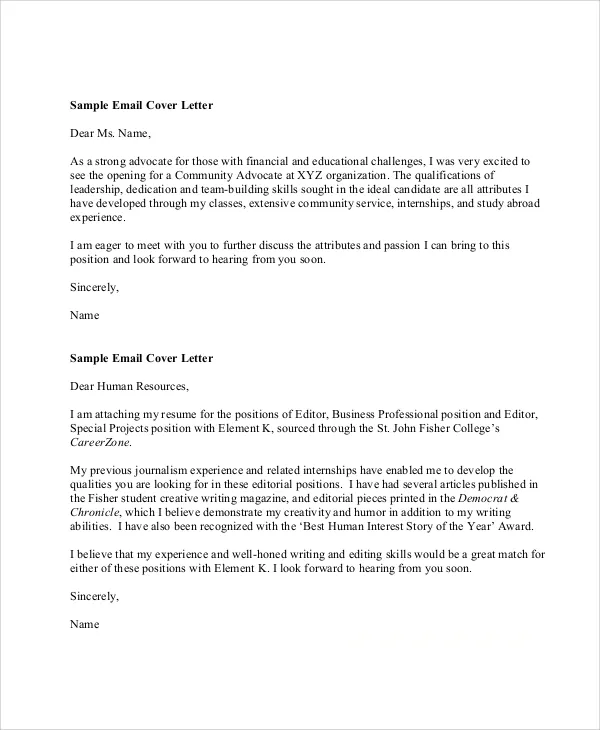Understanding Email Resume Cover Letters
In today’s digital age, the email resume cover letter has become the standard method for introducing yourself to potential employers. It serves as your first impression, providing a brief overview of your qualifications and expressing your interest in the position. Unlike traditional cover letters, email cover letters are concise and designed to be read directly in the body of an email. This means you need to capture the reader’s attention quickly and effectively. The format requires you to make every word count while still conveying your professionalism and suitability for the job. A well-crafted email cover letter complements your resume, giving hiring managers additional context and insights into your personality and career goals.
The Importance of Email Cover Letters
An email cover letter is far more than just a formality; it’s a crucial element of your job application. It allows you to personalize your application, demonstrating that you’ve taken the time to understand the company and the role. This shows genuine interest, setting you apart from candidates who might only submit a resume. Furthermore, a cover letter offers the opportunity to address any gaps in your resume or explain career transitions, giving the hiring manager a clear understanding of your professional journey. It’s your chance to showcase your writing skills and communication style, providing a glimpse into how you’d represent the company if hired. By thoughtfully composing your cover letter, you boost your chances of securing an interview.
Key Components of an Effective Email
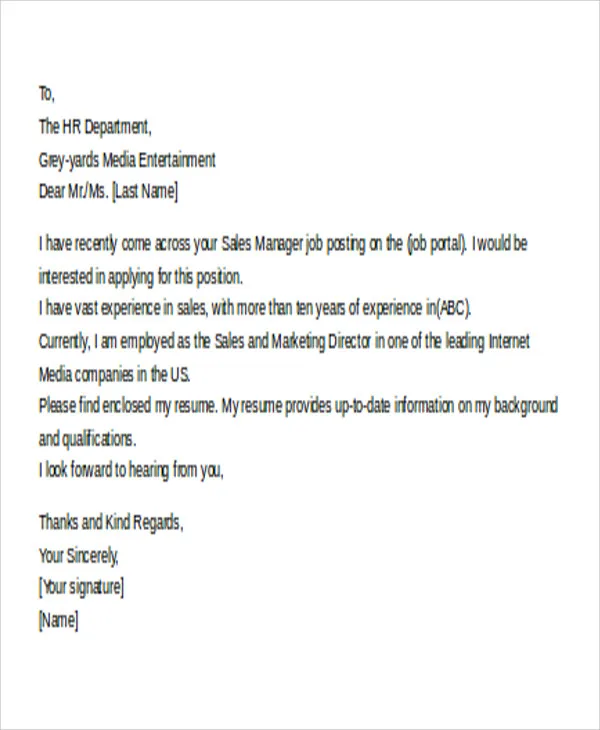
To create a standout email cover letter, focus on a few key components. Start with a professional subject line that clearly states the purpose of your email. Next, use a proper greeting, addressing the hiring manager by name whenever possible. The introduction should immediately capture the reader’s attention, briefly mentioning the position and your source of the job posting. In the body, highlight your relevant skills and experience, aligning them with the job requirements. Show your enthusiasm for the opportunity and explain why you’re a great fit for the company. Finish with a clear call to action, requesting an interview, and a professional closing. Make sure every sentence helps move your application forward, and ensures a good impression.
Crafting Your Subject Line
Your subject line is the first thing a hiring manager sees, making it a critical element of your email cover letter. It should be concise, clear, and directly state the purpose of your email. Include the job title and your name to ensure your application is easily identifiable. Avoid generic phrases like “Job Application” or “Resume” and instead, use something specific, for example, “Application for Marketing Manager Position - [Your Name]”. This helps the recipient quickly understand the email’s content and prioritize it accordingly. A well-crafted subject line increases the likelihood of your email being opened and read, giving you an advantage from the very beginning.
Email Resume Cover Letter Sample Structure
Structuring your email resume cover letter appropriately is key to its effectiveness. The format must be professional and easy to read. Maintain a clear and logical flow from the greeting to the closing. Use short paragraphs and plenty of white space to avoid overwhelming the reader. Break down your email into sections, each serving a distinct purpose. This structured approach helps you organize your thoughts and present your information effectively. By following a consistent format, you create a professional document that showcases your writing skills and attention to detail. Following a standard structure simplifies the review process for hiring managers, highlighting your key qualifications quickly.
The Greeting
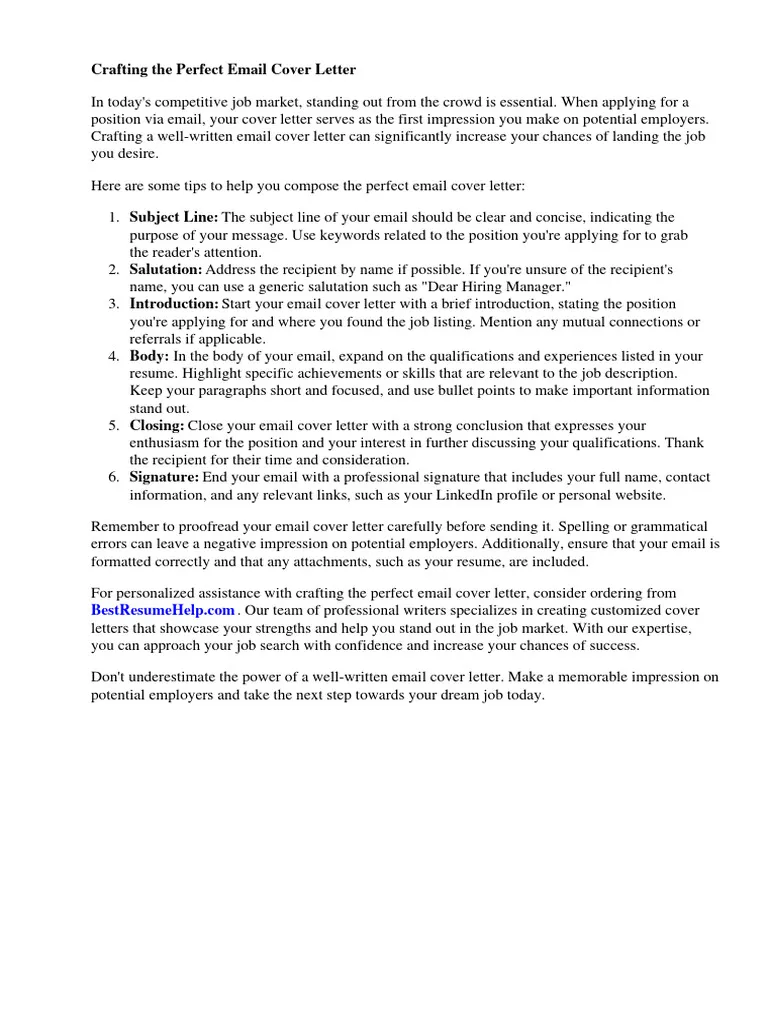
The greeting sets the tone for your entire email cover letter. Addressing the hiring manager by name is the preferred method, demonstrating that you’ve done your research and personalized your application. If you can’t find a name, use a professional greeting like “Dear Hiring Manager” or “Dear [Company Name] Team.” Avoid overly casual greetings like “Hi” or “Hello.” The tone should be formal and respectful, aligning with the company’s culture and the professional nature of a job application. Getting the greeting right shows your attention to detail, making a positive first impression and setting the stage for a favorable review of your qualifications.
The Introduction
Your introduction must grab the reader’s attention immediately. Briefly mention the specific position you’re applying for and how you learned about the opportunity, whether it was through a job board, company website, or a referral. State your purpose clearly and succinctly. In one or two sentences, express your strong interest in the role and the company. Emphasize why you are excited about the prospect of contributing to their team. This initial section must highlight your enthusiasm, setting the stage for the detailed information to come in your following paragraphs. A strong introduction increases the likelihood of the reader continuing through the rest of your email cover letter.
Highlighting Your Skills and Experience
The body of your email should focus on highlighting your relevant skills and experiences. Tailor this section to the specific requirements of the job description. Select the most relevant qualifications from your resume and elaborate on them to create more compelling details. Provide specific examples of your achievements, quantifying your contributions whenever possible. Use keywords from the job posting to show your understanding of the role and your ability to meet its demands. Focus on what you can bring to the company. This section is the heart of your email, and your success depends on a clear, focused presentation. Make your key strengths stand out, and show how you’ve used them to solve past challenges and achieve business goals.
Expressing Your Enthusiasm
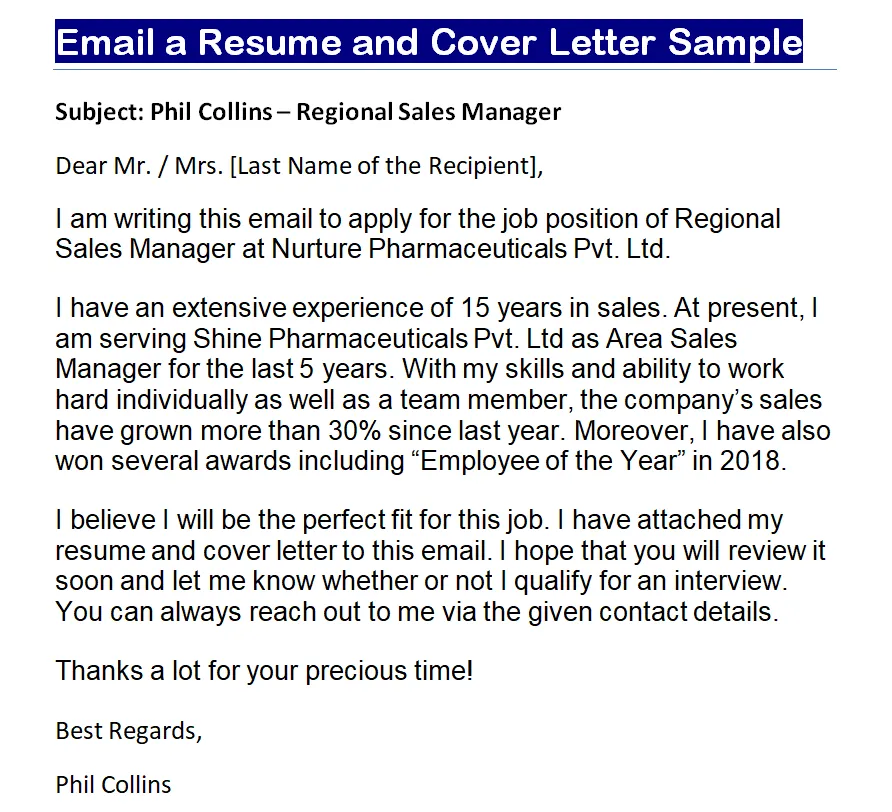
Expressing enthusiasm is essential to show your genuine interest in the position and the company. State clearly why you are excited about the role and what aspects of the company culture or mission appeal to you. Share any knowledge of the company’s recent achievements or projects to demonstrate your understanding and preparation. Your enthusiasm can set you apart from other candidates, indicating you are motivated to contribute and succeed. Be specific about your interest and articulate how your goals align with the company’s objectives. Showing genuine excitement indicates your positive attitude and enhances your profile.
Call to Action
Include a clear and direct call to action to prompt the hiring manager to take the next step. State your availability for an interview, and express your eagerness to discuss your qualifications further. Make it easy for them to contact you by providing your phone number and email address again. Thank them for their time and consideration. A strong call to action encourages a quick response and moves your application forward. This section should be polite and professional, reminding the reader of your interest and commitment.
The Closing
Conclude your email with a professional closing, such as “Sincerely,” “Best regards,” or “Thank you.” Ensure your name is clearly visible below the closing. Reiterate your contact information if you didn’t include it in the call to action. A well-crafted closing reinforces your professionalism and attention to detail, leaving a lasting positive impression. The closing should be simple and respectful, bringing your email to a smooth, polished end. This final step completes your application professionally and shows your readiness to move forward in the hiring process.
Email Resume Cover Letter Samples
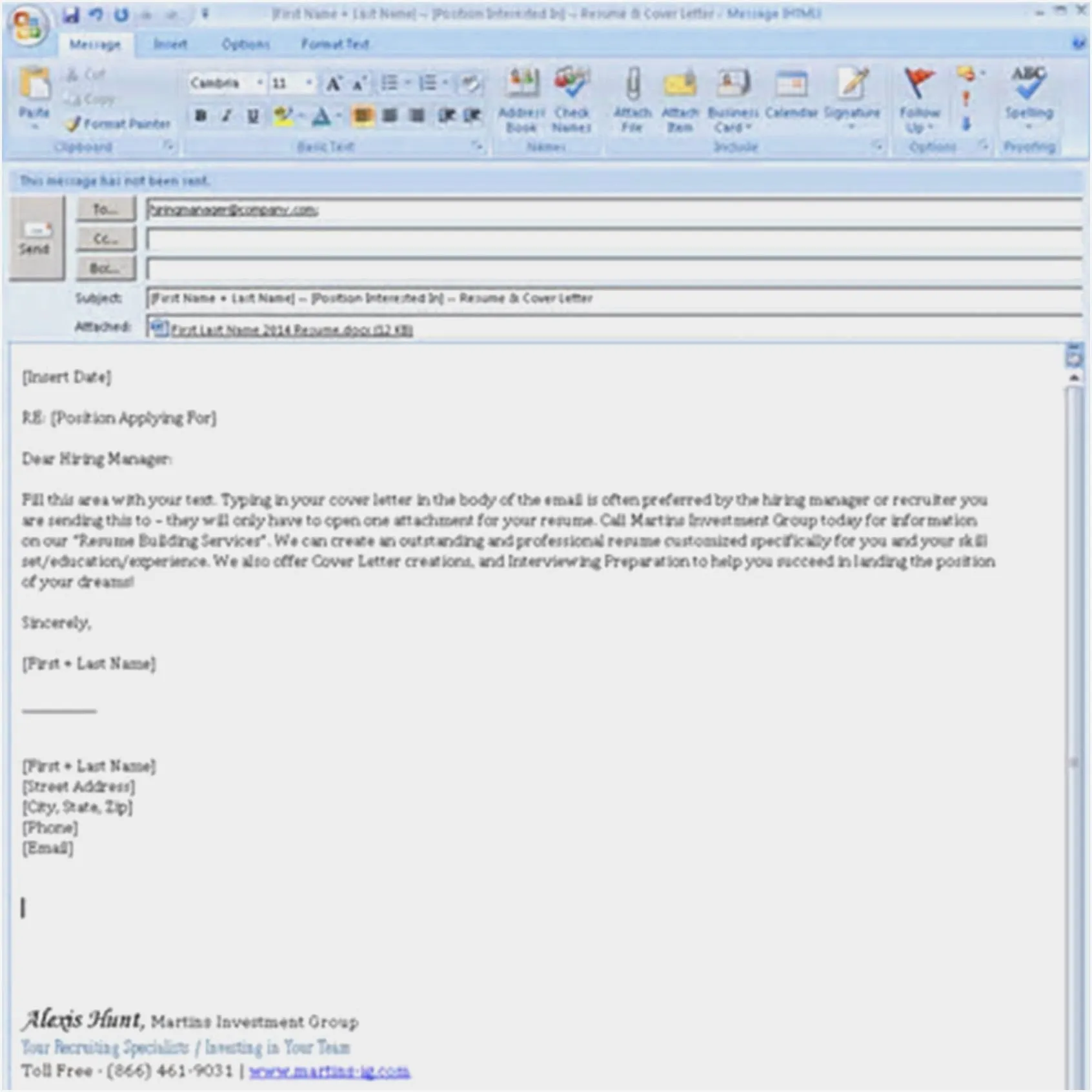
Reviewing samples of email resume cover letters can provide valuable guidance when crafting your own. Understanding different formats and approaches, and how they work, can provide the best starting points for your own. However, it’s essential to customize samples to suit your own skills and the specific job. Generic samples won’t be as effective as tailored ones. Adapt the content to reflect your unique experiences, skills, and the requirements of the role, demonstrating your understanding of the company and your suitability for the position.
Sample for Entry-Level Positions
Entry-level candidates should focus on highlighting relevant coursework, internships, volunteer experiences, and transferable skills. Demonstrate your eagerness to learn and contribute. The sample should clearly state your career aspirations and show how the position aligns with your goals. Show your academic achievements, relevant projects, and any leadership roles you have held. Illustrate any soft skills, like communication, teamwork, and problem-solving abilities, as these are very attractive to new hires. Show your enthusiasm to learn and contribute to the company’s growth, and the value you hope to bring.
Sample for Mid-Career Professionals
Mid-career professionals should emphasize their accomplishments, highlighting their significant contributions and demonstrating tangible results. Quantify your achievements with metrics and data to showcase your impact. The sample should provide an overview of your career progression and align your experience with the job requirements. Highlight your leadership experience and project management skills. Illustrate your ability to drive results and solve complex problems. Focus on showcasing your value, demonstrating your ability to handle additional responsibility, and contributing to the organization’s success. This section should show how your skills match the employer’s requirements.
Sample for Senior-Level Candidates
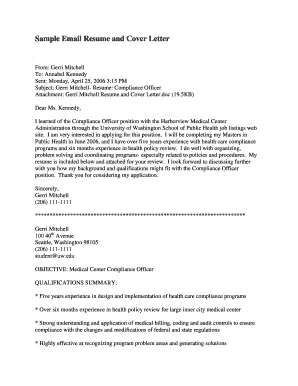
Senior-level candidates should focus on their strategic vision, leadership capabilities, and ability to drive significant organizational change. Emphasize your impact at the highest levels. Demonstrate your ability to lead teams, manage budgets, and achieve strategic goals. Your cover letter should be a strong summary of your career achievements and strategic impact. Quantify accomplishments with specific data, showcasing your ability to lead and influence. Highlight your ability to innovate, build relationships, and make key decisions. Show your ability to offer strategic direction and drive business growth, and your capability to offer a positive impact at a senior level.
Customizing Your Email Cover Letter
Customizing your email cover letter is essential for making a strong impression. General cover letters are likely to be overlooked, and by personalizing each one, you boost your chances of getting noticed. Research the company and the specific role to understand their needs and align your skills. Tailor the content to highlight your most relevant experiences, skills, and accomplishments. Use keywords from the job description throughout your letter. This demonstrates that you understand what they’re looking for, and shows that you’re a great fit. Show your knowledge of the company and a genuine interest in the opportunity. Personalization significantly increases your chances of getting an interview.
Tailoring Your Email to the Job
Tailoring your email cover letter to each specific job is critical. Carefully review the job description to identify the key requirements, skills, and responsibilities. Align your experience with these requirements, selecting the most relevant accomplishments and skills. Explain how your skills and experience make you the ideal candidate for the role. Focus on the specific needs of the company. Show your understanding of the company’s needs and challenges. Customizing shows the hiring manager that you have what it takes to succeed, increasing the likelihood of your application standing out.
Using Keywords Effectively
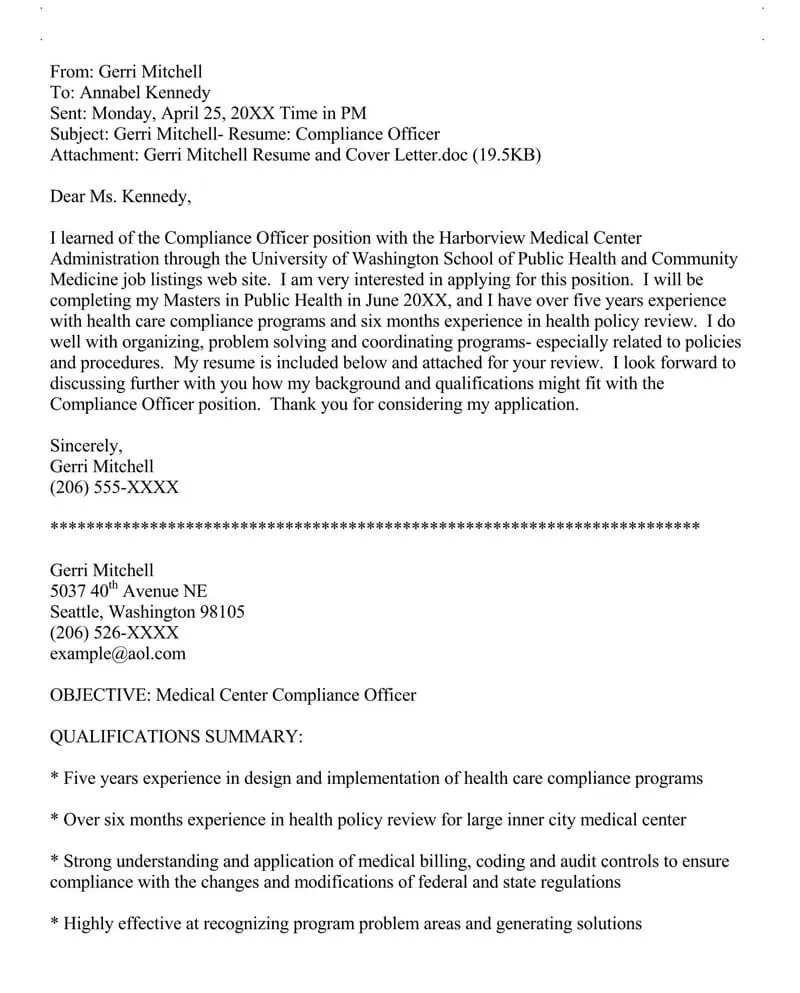
Integrating relevant keywords from the job description into your email cover letter is an important SEO practice, making your application more visible to applicant tracking systems. Carefully read the job description and identify the primary keywords and phrases used to describe the required skills and experience. Naturally incorporate these keywords into your text, emphasizing your qualifications and achievements. This helps your application rank higher in applicant tracking systems. It also demonstrates to the hiring manager that you meet the criteria for the role. Use keywords strategically to highlight your key skills and experiences. Focus on the language that the employer uses to describe the position.
Formatting and Presentation
The formatting and presentation of your email cover letter are critical for readability and professionalism. Make sure your email is easy to read and visually appealing. This makes a good first impression and shows that you have great attention to detail. Use a clean and simple font like Arial or Calibri, and format the text to make it easy to scan. Maintain a consistent and professional layout throughout. These considerations will enhance your overall presentation and make it easy for the hiring manager to assess your qualifications quickly.
Font and Readability
Choose a professional and easy-to-read font for your email cover letter. Arial, Calibri, Times New Roman, and Helvetica are generally good choices. Use a font size between 10 and 12 points. Proper font and readability enhance the overall presentation and make it easy for the hiring manager to read and absorb the information quickly. Maintain a consistent font throughout the entire email. This ensures your cover letter looks organized and professional. Ensure readability across various devices and email clients.
Proofreading and Editing
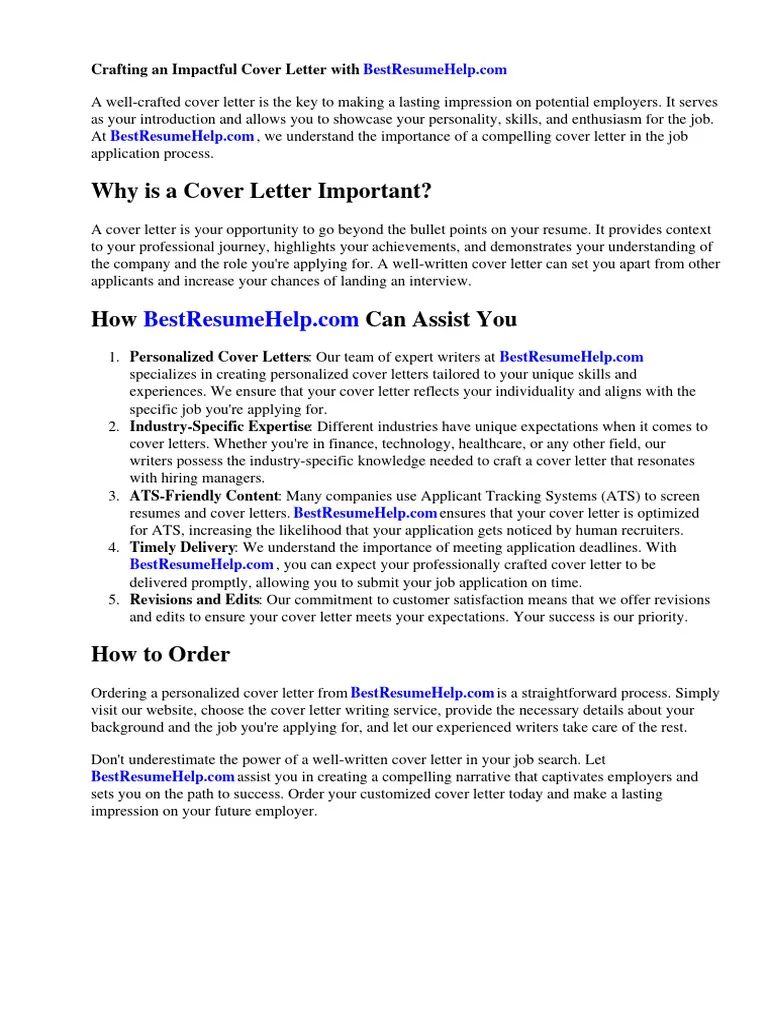
Proofreading and editing your email cover letter is non-negotiable. Typos, grammatical errors, and poor sentence structure can undermine your professionalism. Before sending, carefully proofread your email, and consider having a friend or colleague review it as well. Pay attention to grammar, spelling, punctuation, and sentence structure. Look for awkward phrasing and ensure the content flows smoothly. Proofreading reflects your attention to detail and professional standards. A polished email cover letter makes a strong impression and shows respect for the hiring manager. Before sending, ensure you are fully satisfied, and take the time to do a final check.
Common Mistakes to Avoid
Being aware of common mistakes can help you avoid them and make your email cover letter shine. Many applicants make mistakes that can damage their image and diminish their chances of success. Be sure to avoid these pitfalls so that your cover letter is effective and shows you at your best. The goal is to present yourself as a skilled and motivated candidate, ready to take the next step. By understanding the common errors, you can ensure your application is polished, professional, and effective.
Typos and Grammatical Errors
Typos and grammatical errors are among the most common and damaging mistakes in email cover letters. These errors indicate a lack of attention to detail and can detract from your professionalism. Before sending, carefully proofread your email. Use spell-check and grammar-check tools, but do not rely on these tools alone. Have a trusted friend or colleague review the email. A clear and concise letter shows your writing skills, and the ability to follow instructions. Taking the time to ensure accuracy makes a good impression and shows that you’re serious about the opportunity.
Generic or Uninspired Content
Generic and uninspired content is a major mistake in any email cover letter. Avoid using generic templates or generic phrases. Your goal should be to showcase your unique skills, experiences, and enthusiasm. Write about the specific requirements of the job. Demonstrate that you’ve researched the company and tailored your letter to its needs. Highlight your personality and communicate your genuine interest in the role and the company. Personalizing your email sets you apart from other applicants. These actions increase your chances of making a good impression and getting the interview.
Sending Your Email Cover Letter
Sending your email cover letter appropriately is an essential step in the job application process. Ensure the format is correct, and all attachments are present. Include a well-crafted subject line and a professional email signature. Always be mindful of best practices. These actions show your professional approach to the job search process.
File Attachment Best Practices
When attaching your resume, save it as a PDF file to maintain formatting across different devices and email clients. Name your file clearly using your name and the document type. This helps the hiring manager find and identify your document easily. For example, “Your Name_Resume.pdf.” Double-check that the correct resume version is attached. Always verify that the attached files open correctly before sending the email. Following these steps ensures your resume is received and presented professionally, making a positive impression.
Following Up
Following up on your email cover letter and resume is an appropriate step in the job search process. After submitting your application, wait a reasonable amount of time, typically one to two weeks, before sending a follow-up email. Keep your follow-up brief and courteous. Thank the hiring manager for their time. Reiterate your interest in the role and highlight any relevant qualifications. If you’ve heard nothing, ask politely if they have received your application. Respect their time and do not be overly persistent. Following up shows your interest and persistence. It can also remind the hiring manager of your application.
